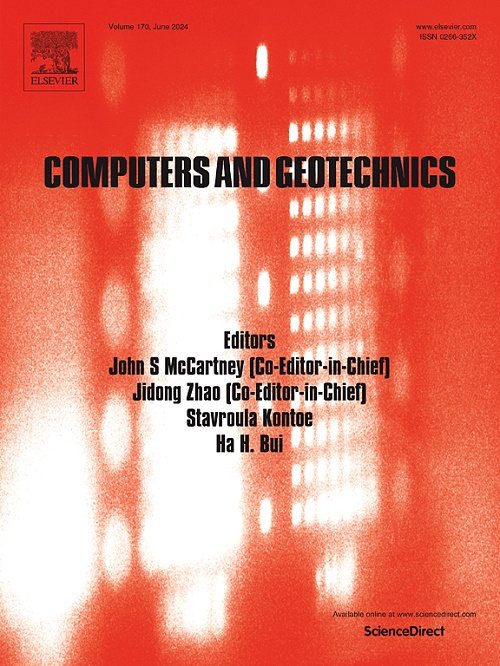Enhancing Bayesian probabilistic back-analysis efficiency using multi-type surface and subsurface monitoring data: Case study of the Baihetan left bank slope
IF 5.3
1区 工程技术
Q1 COMPUTER SCIENCE, INTERDISCIPLINARY APPLICATIONS
引用次数: 0
Abstract
In large-scale hydropower project construction, comprehensive internal and external deformation monitoring (periodic observation) of high-steep rock slopes is crucial for revealing slope deformation and rock mass deterioration. However, few studies have examined the impact of using both surface and subsurface monitoring data on the performance of probabilistic back-analysis (PBA). This study aims to fill this gap by developing an improved Bayesian PBA method. Using the left bank excavation slope of the Baihetan (BHT) hydropower station in China as a case study, we probabilistically calibrated the geotechnical parameters of the slope using multi-type surface (robotic total stations) and subsurface (multi-point displacement meters and inclinometers) monitoring data. The results indicate that compared to using a single type of monitoring data, using multiple types of monitoring data can further reduce the uncertainty of geotechnical parameters. Specifically, integrating surface and subsurface monitoring data for back-analysis can achieve an optimal three-dimensional model prediction and yield a reasonable parameter set. When there are differences in monitoring data stability, incorporating relatively stable monitoring (minor deformation) data into the Bayesian back-analysis can help improve the convergence speed of Bayesian sequential inversion. However, appropriate methods are required to evaluate the contribution of these data to the back-analysis model.
求助全文
约1分钟内获得全文
求助全文
来源期刊

Computers and Geotechnics
地学-地球科学综合
CiteScore
9.10
自引率
15.10%
发文量
438
审稿时长
45 days
期刊介绍:
The use of computers is firmly established in geotechnical engineering and continues to grow rapidly in both engineering practice and academe. The development of advanced numerical techniques and constitutive modeling, in conjunction with rapid developments in computer hardware, enables problems to be tackled that were unthinkable even a few years ago. Computers and Geotechnics provides an up-to-date reference for engineers and researchers engaged in computer aided analysis and research in geotechnical engineering. The journal is intended for an expeditious dissemination of advanced computer applications across a broad range of geotechnical topics. Contributions on advances in numerical algorithms, computer implementation of new constitutive models and probabilistic methods are especially encouraged.
 求助内容:
求助内容: 应助结果提醒方式:
应助结果提醒方式:


